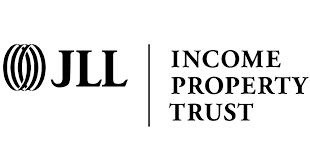JLL Income Property Trust, Inc.
Score
4
- ClassA (“ZIPTAX”)
- Managed byLaSalle Investment Management, Inc
- Release dateMarch 23, 2024
- UpdatedJuly 16, 2025
Net Asset Value
$4.4B(as of 03/31/2025)
Max. Offering Size
$3.0BInvestment Style
CoreHQ Location
Chicago, ILAmount Raised
NALegal Construction
CorporationAsset Class
Real EstateInception
October 2012Eligibility
All investorsMin. Investment
$10,000Target Return
4.7%Net Total Return
4.75% since inception (with sales load, as of 03/31/2025)Distributions
QuarterlyIncentive Fee
10% of total return, subject to 7% hurdle rateAnnual Management Fee
1.25% of aggregate NAVHolding Period
Permanent CapitalAdvisor
LaSalle Investment Management, IncDistributor
Not explicitly disclosedAuditor
KPMG LLPCounsel
Alston & Bird LLPThe Bottom Line
JLL Income Property Trust offers daily-valued shares in a diversified portfolio of commercial real estate—industrial, residential, grocery-anchored retail, and healthcare properties across the US. The fund targets steady income through quarterly distributions, backed by high occupancy rates (96%) and conservative leverage (30%).
Here's what needs your attention: While the fund delivers a solid 4.32% 10-year return, it significantly underperformed the S&P 500 (11.0%) and even public REIT ETFs (6.3%). The 2.1% total annual expense ratio quietly eats away at returns, and despite "daily NAV" marketing, this isn't as liquid as public markets—redemptions are capped at 5% quarterly and can be suspended entirely.
Your Money vs. Reality
JLL Income Property Trust has delivered modest returns that significantly lag major asset classes over the past decade. With Class A shares returning just 4.32% annually over 10 years, the fund has dramatically underperformed wealth-building assets.
Note: For the money market returns, Vanguard Federal Money Market Fund (VMFXX) has been considered. For Gold prices, London Bullion Market Association data has been used.
Key Takeaways:
- JLL beat bonds and cash but significantly lagged stocks and public REITs.
- The $15,794 opportunity cost vs. S&P 500 represents substantial wealth foregone.
- Even gold, traditionally seen as a defensive asset, outperformed JLL by nearly $2,000.
Fund Strategy
JLL Income Property Trust invests in stabilized commercial real estate properties across four main sectors: residential (44%), industrial (32%), grocery-anchored retail (21%), and healthcare (3%). The strategy focuses on high-occupancy properties with long-term leases to generate steady rental income while maintaining conservative leverage levels around 30%.
Fit Check
Available to: Non-Accredited investors; $10,000 minimum investment.
Ideal For:
- Long-term investors seeking consistent quarterly income.
- Those wanting real estate exposure with lower volatility than public markets.
Less Ideal For:
- Anyone needing quick liquidity or emergency access to funds.
- Growth-focused investors building wealth for retirement.
Fast Facts
Key Concern
What It Means for You
Wealth Growth Falls Short
Delivered just 4.3% annual returns over 10 years—well below the S&P 500 (11.0%) and even public REITs (6.3%). You're missing out on serious compounding potential.
High Fees Eat Your Gains
A hefty 3% upfront load plus 2.1% annual expenses—over 10 years, nearly 48% of your potential gains are lost to fees, reducing your wealth-building power.
Limited Liquidity
Redemptions capped at 5% of NAV per quarter, and can be suspended altogether. You can't easily access your money when life (or markets) shift.
Valuation Based on Appraisals
The fund promotes "daily NAV," but pricing relies on internal property appraisals, not real market transactions—so what you see may not reflect what you'd actually get.
Pros/Bulls Say
- High occupancy (96%) and long leases support stable income streams.
- Conservative debt strategy (30% leverage) adds protection during market downturns.
- Portfolio diversified across property types and geographies reduces concentration risk.
Cons/Bears Say
- Limited liquidity with quarterly redemption caps means your money could be trapped during market stress.
- High fee structure (3% upfront + 2.1% ongoing) significantly reduces wealth-building potential.
- 10-year returns of 4.32% badly lag public benchmarks, limiting long-term wealth compounding.
Verdict
4/5 — JLL Income Property Trust is a stable income generator but an expensive, illiquid way to access real estate. The combination of high fees, limited liquidity, and underwhelming returns makes it suitable only for investors prioritizing predictable dividends over growth and willing to accept significant liquidity constraints.
Fees & Expenses
Fee Type
Why It Matters
How Calculated
Typical Amount
Fee Impact Example:
$10,000 invested for 10 years at a 5% net return:
- You’d pay about $300 upfront plus $210/year in ongoing fees—totaling $2,400 over a decade.
- That’s 48% of your potential gains lost to ongoing expenses.
Portfolio Snapshot
Asset Type
Geography
Tenant Industry
Overview
ALIGNMENT: Average
- JLL REIT’s sponsor committed $100 million of its own capital in 2024, signaling solid confidence in the fund’s prospects and a degree of alignment with outside investors. Management is only paid performance fees for returns above 7%, motivating value creation for investors.
- However, details about the personal financial stakes of individual managers are sparse, making it hard to gauge true alignment at the leadership level. The reliance on high thresholds could still leave some gaps in shared interests over the long haul.
Performance: Below Average
- Over a 10-year period, Class A shares produced a modest 4.3% annualized return. After fees, the results are even less compelling, particularly compared to the broader universe of listed REITs or public market vehicles, which often offer greater returns and liquidity.
- The last three years have seen particularly lackluster performance, with annualized returns of -4.8%. This suggests considerable vulnerability to recent market and property sector headwinds, reducing the fund’s appeal for return-focused HENRY investors.
Market Risk: Average
- The REIT is diversified across various property types and geographies, which helps spread risk and offers some defense against localized downturns. This design can cushion against shocks in a specific asset class or region.
- Nonetheless, JLL REIT remains exposed to broad real estate cycles and economic conditions that influence commercial property values. Interest rate movements and overall macroeconomic volatility can significantly impact yield and portfolio stability.
Business Risk: Average
- The perpetual-life structure allows ongoing investment, but creates uncertainty about future liquidity and exit strategies for holders who may eventually want out. This makes the ability to plan around cashing out more complex for long-term investors.
- JLL heavily relies on advisor LaSalle’s management and has a layered, intricate fee structure. These factors introduce operational complexity and could impact the sustainability and clarity of the business model over the long term.
Debt Risk: Below Average
- With a conservative 30% leverage ratio, JLL REIT maintains a lower debt profile than many competitors, buffering it against property market shocks. The balance between fixed and variable interest debt spreads risk but does introduce vulnerabilities in rising rate environments.
- Exposure to variable-rate loans could increase interest expenses quickly if rates climb, potentially reducing distributable cash and increasing refinancing pressure. Strong debt discipline partially offsets these risks but does not eliminate them, especially during tightening cycles.
Liquidity Risk: Average
- Liquidity is strictly controlled, with quarterly redemption limits of just 5% of NAV, and the board can suspend redemptions when needed, reducing flexibility for investors wanting to access funds quickly in periods of turmoil.
- This setup means investors might face long waits or be unable to redeem when markets are under stress. For HENRY investors, this locks up capital and adds another layer of risk, especially if personal liquidity needs coincide with market instability.
Transparency: Above Average
- JLL REIT provides daily net asset value updates and makes regular SEC filings, ensuring robust reporting and giving investors a timely look at their investment’s status, portfolio, and ongoing performance.
- However, reliance on appraisals for property valuation, rather than frequent market transactions, means NAV figures may lag behind true market conditions. This can make it harder for investors to accurately gauge the immediate sale value of assets or their real-time net worth.
Manager Insights

Allan Swaringen
President & CEOExperience & Highlights: 25+ years real estate experience; Led fund since inception in 2012.
Education: MBA University of Chicago; BS University of Illinois.

Gregory A. Falkek
CFOExperience & Highlights: 25+ years real estate experience; Served as CFO and Treasurer since 2011.
Education: B.S. in Finance and B.S. in Economics from Northern Illinois University ,M.S. in Accountancy Science from Northern Illinois University.
Allan Swaringen has led JLL Income Property Trust since 2012, bringing over 25 years of real estate experience. The fund benefits from LaSalle Investment Management's institutional expertise and JLL's global real estate platform.
Peer Comparison
(as of 3/31/2025)
(as of 3/31/2025)
(as of 3/31/2025)
Disclaimer
All Rights Reserved. The data and analyses contained herein are the property of Noyack and are protected by copyright and other intellectual property laws. The information provided is intended solely for informational purposes and should not be construed as investment advice. It is not an offer to buy or sell a security, and it is not intended to be used as the sole basis for any investment decision. The information contained in this document is believed to be accurate and reliable based on sources believed to be reliable, but Noyack makes no representation or warranty, express or implied, as to its completeness, accuracy, or timeliness. The data and analyses are subject to change without notice and Noyack is not obligated to update this information. The use of the information contained in this document is at the sole risk of the reader, and Noyack shall not be responsible for any losses, damages, or expenses incurred by any person as a result of reliance on the information contained herein. Noyack does not endorse or approve any investment or trading strategy and does not guarantee any specific outcome or profit. The reader should always conduct their own independent analysis and consult with a qualified financial advisor before making any investment decisions. This document may contain forward-looking statements and projections which are subject to risks and uncertainties, and actual results may differ materially. Past performance is not indicative of future results. This document is not intended for distribution to, or use by, any person or entity in any jurisdiction or country where such distribution or use would be contrary to local law or regulation. Noyack reserves the right to modify or discontinue the provision of the information contained in this document, in whole or in part, at any time and without notice. The information contained in this document is provided “as is” and Noyack makes no representation or warranty of any kind, express or implied, as to the accuracy, timeliness, completeness, merchantability or fitness for any particular purpose of the information contained in this document. Noyack shall not be liable for any errors or omissions contained in this document or for any damages whatsoever arising out of or in connection with the use of this document.



